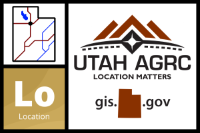Submitting Data to the Open SGID
If you would like to share data with the Open SGID, we will work with you to get a copy of the data. We’ll then run checks and reviews on the data to ensure they are clean before being loaded, and we also need to identify when and how we’ll incorporate any future updates to the data.
We use issues in our Porter repository on GitHub to track a dataset’s progress in the submission process and to keep an open and transparent record of everything that happened.
If you’ve still got questions after reading this, reach out to Zach Beck from UGRC at ZBeck@utah.gov or 801-538-3072, or Michael Foulger from UGRC at MichaelFoulger@utah.gov or 801-652-2258; or you can contact anyone else on the UGRC team.
Step 1: 📋 Qualifications (You)
First, make sure your dataset meets the SGID qualifications:
Step 2: ✏️ Data Preparation (You)
Before submitting your data, make sure it’s got a stable schema and is ready for public consumption. Make sure the metadata meets our minimum standards. If you need help with metadata, check out our basic metadata creation process.
Start thinking about the future—how often will this dataset be updated? How will you send those updates to us? Sometimes, old data is worse than no data at all. If a user can’t find anything, they still know what they don’t know. But if they find outdated data without realizing it, they may not know that they are acting on bad data.
Step 3: 📂 Open an Issue (You)
Once you’re ready to send your data our way, submit an issue in Porter using the Add data to Open SGID template. Fill out the Summary information and check the relevant boxes in the Submitter's Process section.
Step 4: 💠 Sharing (You)
After creating the issue, contact the UGRC team to work out the best way to share your data with us. We can get the data from you in many different ways:
- We can download it from your choice of cloud storage solutions (Google Drive, Dropbox, etc)
- We can pull it in from an ArcGIS Online/Enterprise Map or Feature Service (our preferred option for frequently-changing data)
- We can set up an FTP share for you to upload it to
- You can just send us a zipped shapefile or GDB via email
Step 5: 🔎 Review (You and Us)
We will review your submission against the qualifications and reach out with any questions. You can track this in the UGRC's Process section of the issue.
We run Sweeper on all Open SGID datasets to fix empty or duplicate geometries/rows and to double check the metadata. If you’d like, we’ll share Sweeper’s results with you. Fixing it on your end will help streamline any future data updates, but this isn’t necessary to submit the data for the Open SGID. We’ll still happily add it to the Open SGID after fixing any issues on our local copy with Sweeper.
Step 6: 📤 Publish (You and Us)
Once we’ve worked together to resolve any questions or problems, we’ll add it to the Open SGID.
If you sent the data to us as a shapefile or GDB, or as a private or temporary feature service, we will also upload your dataset to our own ArcGIS Online organization as a hosted feature service and share it publicly through Open Data. As part of this process, we will add a thumbnail that includes both the UGRC logo and the relevant SGID category icon to help people searching ArcGIS Online identify SGID data:

However, if you maintain maintain your own public feature service of the data, we won’t create our own. Instead, please share your item with SGID Open Data.